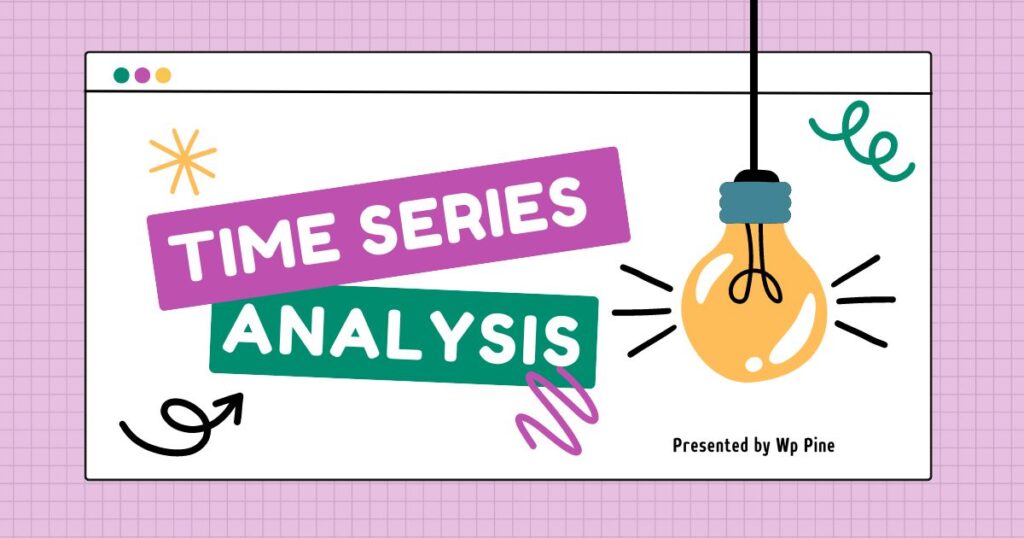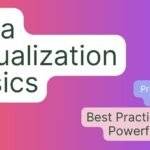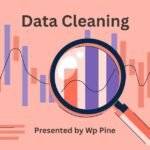Fundamentally, one of the most important techniques available under the data science and analytics umbrella is time series analysis—dealing with equally spaced time intervals based on collected data points. Its applications lay in areas like finance and economics, weather forecasts, and to a large extent, many of the related subfields. This paper is set in the specifics of time series data, the overall information on major methods for time series analysis and modeling, discussion on application in real life throughout different fields, and the emerging trends, which outline the future of the discipline.
Understanding Time Series Data
A series of observations taken at regular time intervals—whether hourly, daily, monthly, or yearly—becomes time series data. Time series data will usually have ordering, meaning there is a chronological ordering of the data points.
- Trend: The long-term movement or direction of the data, indicating whether values are increasing, decreasing, or stable over time.
- Seasonality: Regular patterns or cycles that occur at predictable intervals, such as daily, weekly, or yearly fluctuations.
- Noise: Random variation or irregularities in the data that do not follow any discernible pattern.
In general, the analysis of a time series data set deals with an extraction of understanding of these components. For example, trend analysis allows one to understand the general tendencies observed in the time series. Seasonal adjustment may delete periodic fluctuations giving an underlying trend. Noise reduction techniques enhance prediction accuracy.
Methods of Time Series Analysis
Statistical Methods
- Descriptive Statistics: Basic statistical measures like mean, median, and standard deviation provide initial insights into the central tendency and variability of the data.
- Autocorrelation and Partial Autocorrelation: This collection of statistical tools evaluates the correlation of past values with the present one in order to expose dependencies and patterns across data that has a certain time series.
- Box-Jenkins Methodology: A systematic approach for identifying, estimating, and checking models for time series data, particularly popularized by the ARIMA modeling framework.
Time Series Decomposition
- Trend Analysis: Separates the time series into trend, seasonal, and residual components using methods like moving averages or decomposition techniques such as STL (Seasonal and Trend decomposition using Loess).
- Seasonal Adjustment: Removes seasonal effects to isolate underlying trends and irregular components, enabling a clearer analysis of long-term trends.
Forecasting Methods
- ARIMA (AutoRegressive Integrated Moving Average): This is a large class of models for time series, starting from the simple autoregressive (AR) method to the composite autoregressive integrated moving average (ARIMA) method. It supports nonstationary time series data in handling and forecasting.
- Exponential Smoothing Methods: This is a family of methods that modelize Simple Exponential Smoothing, Double Exponential Smoothing, Holt’s method, Triple Exponential Smoothing, and Holt-Winters method, all of which forecast future values using weighted averages of past observations.
- Machine Learning Approaches: Recently popular machine learning approaches in time series forecasting include support vector machines, random forests, and neural networks, including LSTM. These approaches have shown good results because of their flexibility in capturing complicated patterns, increasingly providing decent forecast accuracy.
Emerging Trends in Time Series Analysis
- Big Data and Scalability: The upsurge in the volume of data, especially time series data emanating from IoT devices, sensors, and online platforms, requires algorithms that are scalable and can be solved using cloud-based solutions.
- Deep Learning for Time Series: Recent advances in deep learning, particularly in the field of sequence modeling and newly developed mechanisms of attention, cement the depth in realizing intricate dependencies held in the time series data.
- Interdisciplinary Applications: Integrating the analysis of time series data with other disciplines in which time series datasets are also applied, for instance, healthcare, in monitoring patients and diseases, cybersecurity to detect anomalies in the network traffic, and marketing, in predicting consumer behavior and demand patterns
Applications of Time Series Analysis
Time series analysis finds diverse applications across industries:
- Financial Forecasting: Predicting stock prices, currency exchange rates, and economic indicators based on historical trends and market data.
- Demand Forecasting: Forecasting sales, inventory levels, and consumer demand patterns to optimize supply chain management.
- Weather Forecasting: The process of modeling temperature trends, precipitation levels, and the seasonal weather patterns in coming up with an accurate weather prediction.
- Healthcare: Trends in patients’ diseases, efficacy of treatment, and resource allocation are analysed, thereby helping in health planning and management.
- Economics: Trends in GDP, inflation rates, and unemployment rates are studied in order to understand economic cycles and hence inform policy decisions.
Conclusion
It is efficient for deriving insights from data, making predictions, supporting the decision-making process based on the historical trend, and the effective tool in time series analysis. With statistical methods and such advanced forecasting models supplemented with machine learning techniques, analysts can enlighten data and forecast valuable future insight into trends more accurately. With future changes set to take place across industries, one may only expect the list of such applications to grow, hence fostering innovation and other cases of data-based decision-making.
In brief, successful time series analysis requires primarily an understanding of the principles of statistics, the ability to use the analytical tools, and domain knowledge for correct interpretation and application of results. Knowledge domains such as these can be interfaced with business strategy and operations to help organizations realize, through the exploitation of their time series data, its potential to be competitive and grow along a sustainable trajectory.
Further Reading
These resources offer in-depth insights, practical examples, and advanced techniques for mastering time series analysis in diverse fields.
For further exploration of time series analysis techniques and applications, consider these recommended resources:



